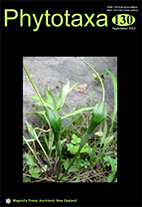Abstract
Halojulellaceae fam. nov. and Halojullela gen. nov. are introduced to accommodate Julella avicenniae, a marine species in the suborder Pleosporineae, order Pleosporales, Dothideomycetes. Justification for the new family is based on combined gene analysis of the large and small subunits of the nuclear ribosomal RNA genes (LSU, SSU) and two protein coding genes RPB2 and TEF1, as well as morphological characters. Halojulellaceae and Halojulella are characterized by immersed to semi-immersed, clypeate ascomata, with short, papillate ostioles, cellular, hyphae-like, pseudoparaphyses, 8-spored, fissitunicate, clavate to cylindrical asci with a well-developed apical apparatus, a moderately long pedicel with a club-like base and hyaline or golden brown, ellipsoidal, muriform ascospores and is typified by Halojulella avicenniae. Halojullela differs from Julella, (type J. buxi) in its marine habitat and distinctly differing ascus with the apical apparatus being well-developed and moderately long club-like pedicel. Morphological characters and molecular data show that H. avicenniae belongs in the Pleosporales, outside any of the known families, and thus a new family is introduced to accommodate it. Julella is maintained as a distinct genus which is presently most likely polyphyletic with saprobic and lichenized elements and needs further study as no molecular data is presently available for any species.

